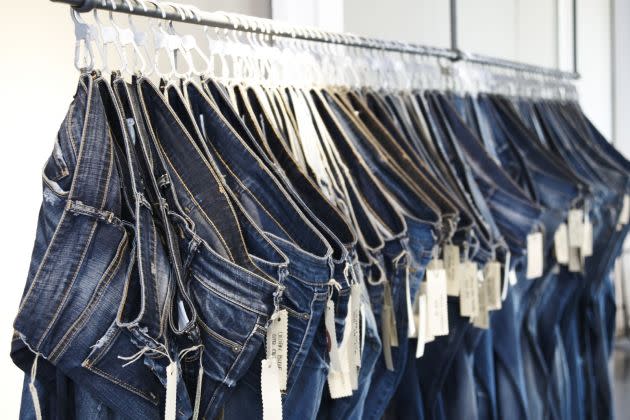Sonovia, Kering and PureDenim Team Up on Indigo Dye Technology

The partnership between Israeli company Sonovia and Italian denim mill PureDenim is getting support from a leader in luxury fashion.
French luxury group Kering entered an agreement to develop and adapt Sonovia’s D(y)enim indigo yarn dyeing ultrasound technology into its denim lines.
More from Sourcing Journal
The technology leverages ultrasonic technology to apply indigo on yarns instead of traditional water-intensive dye processes. It is said to reduce the use of water in the dyeing process by up to 85 percent and is 100 percent free of hydrosulfites, one of the most toxic residues involved in the process.
In May 2022, PureDenim announced it would start on pre-production development and integration of the technology. It has been working together with Sonovia to scale up the innovation.
“Sonovia’s technology is the ultimate step towards near-zero-impact dyeing,” said Gigi Caccia, CEO and owner of PureDenim.
Sonovia said Kering’s interest in the technology is a notable shift that will help move fashion away from excessive waste of water chemicals and energy. It will also help Kering achieve its pledge to reduce its greenhouse gas emissions by 40 percent.
Roy Hirsch, chief business officer at Sonovia, noted the importance of Kering’s participation in the latest collaboration. “The agreement will revolutionize the textile industry and increase sustainability in the fashion world,” he said.
Kering owns more than a dozen luxury brands, including Saint Laurent, Gucci, Bottega Veneta, Brioni, Balenciaga and Alexander McQueen. In 2022, it had group revenues of $20.3 million.
Sonovia, founded in 2013, is an Israeli startup that produces environmentally friendly textile technology based on the use of ultrasonic bubbles. Toxin-removing bubbles form when the static pressure of the liquid falls below the liquid’s vapor pressure.
The company came to prominence in the finishing sector during the Covid-19 pandemic for the development of the SonoMask which was proven to be 99 percent effective at neutralizing SARS-CoV-2, the virus behind Covid, and influenza particles.
Processing indigo is one of the most toxic processes in the pollutive textile industry, and there are moves afoot to mitigate environmental damage. Cavitation is one solution to the toxicity.
Though indigo dye was originally extracted from the indigo plant, most of today’s indigo pigment is chemically synthesized resulting in a corrosive salt that ultimately ends up in the world’s waterways.
More than a year ago, Pakistan-based vertical denim supplier Crescent Bahuman Ltd. developed a new method of creating new colors of indigo blue. Its Blue Infinity innovation is part of a compact dyeing range requiring fewer dye boxes and less water. Less salt discharge means less waste.
In the U.S., Tennessee-based natural dye manufacturer Stony Creek Colors is currently working with Levi’s to scale its production of plant-based indigo, while others use bacteria to mimic the substance’s rich blue colors.
Scientists from the Korea Advanced Institute of Science and Technology have also metabolically engineered corynebacterium glutamicum, a type of bacteria, to produce indigoidine, a natural blue dye that’s more sustainable than conventional indigo.
